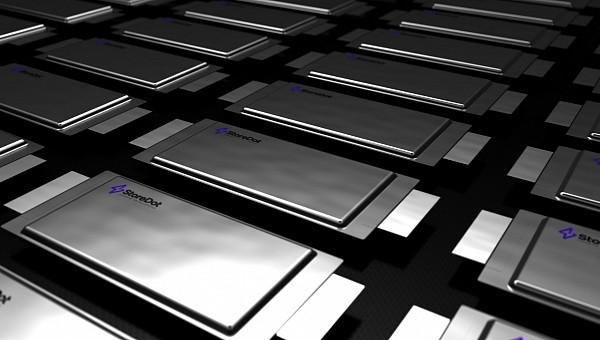StoreDot used to claim its technology would help make cells last longer even when subject to extremely fast charging cycles. Although they are instrumental for current electric cars to be more practical, they also reduce battery pack lifespan. The issue is that StoreDot only had its own tests to prove that. The Shmuel De-Leon Energy laboratory helped fix that.
In a series of tests, the independent lab confirmed that the StoreDot Extreme Fast Charging (XFC) pouch cells offer 300 Wh/kg, which is a very high energy density compared to anything available in the market today. The best NMC or NCA cells nowadays provide 269 Wh/kg. The 11.5% improvement compared to them will allow longer ranges or lower weights for the same range, but that is just part of the good news.
The Shmuel De-Leon Energy labs also confirmed that the XFC cells – also called 100in5, meaning 100 miles in five minutes – can endure 1,000 extremely fast charging sessions. Unfortunately, StoreDot did not disclose how these tests were performed or how much capacity the cells lost along the 1,000 fast-charging sessions.
Previously, StoreDot submitted its XFC batteries to extremely fast charging from 10% to 80% capacity in ten minutes. In these tests, the company counted the charging sessions until the battery lost 20% of its capacity. We suspect these were the same parameters followed by Shmuel De-Leon Energy. If that is the case, the results match those obtained by the company in its own tests.
StoreDot does not seem worried about proving anything else to the market or potential customers. Polestar already said it intends to use XFC cells in its cars when they are ready for production. That means that Geely has an eye on that tech. In other words, Volvo, Geely, Radar, Smart, and even Izera – which will use the Sustainable Experience Architecture (SEA) – may also get these cells. Supposing they stand 1,000 cycles in battery packs that deliver 300 miles (482.8 kilometers), such a battery pack could last 300,000 mi (482,800 km) being continuously fast charged to the extreme.
The Shmuel De-Leon Energy labs also confirmed that the XFC cells – also called 100in5, meaning 100 miles in five minutes – can endure 1,000 extremely fast charging sessions. Unfortunately, StoreDot did not disclose how these tests were performed or how much capacity the cells lost along the 1,000 fast-charging sessions.
Previously, StoreDot submitted its XFC batteries to extremely fast charging from 10% to 80% capacity in ten minutes. In these tests, the company counted the charging sessions until the battery lost 20% of its capacity. We suspect these were the same parameters followed by Shmuel De-Leon Energy. If that is the case, the results match those obtained by the company in its own tests.
StoreDot does not seem worried about proving anything else to the market or potential customers. Polestar already said it intends to use XFC cells in its cars when they are ready for production. That means that Geely has an eye on that tech. In other words, Volvo, Geely, Radar, Smart, and even Izera – which will use the Sustainable Experience Architecture (SEA) – may also get these cells. Supposing they stand 1,000 cycles in battery packs that deliver 300 miles (482.8 kilometers), such a battery pack could last 300,000 mi (482,800 km) being continuously fast charged to the extreme.










